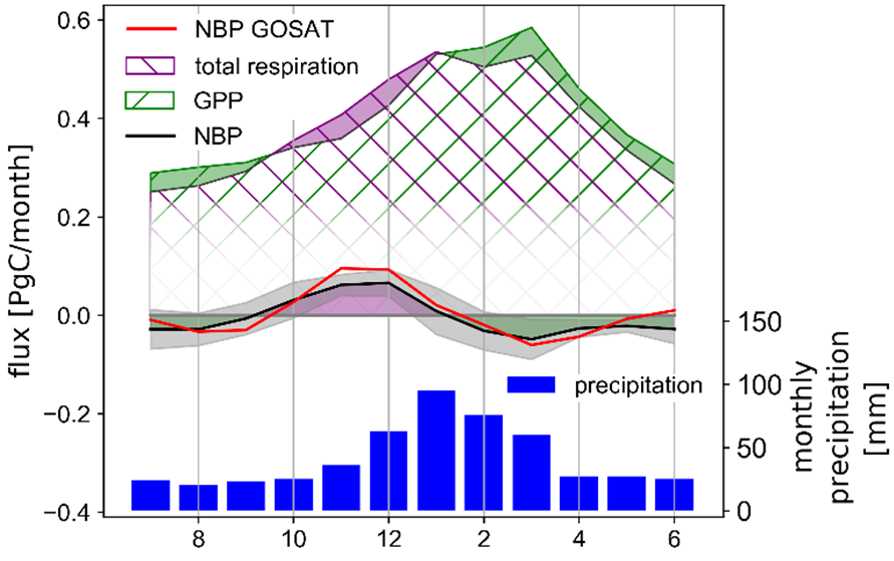Atmospheric Greenhouse Gases and the Carbon Cycle
| Project Manager | Prof. Dr. André Butz |
|---|---|
| Principal Investigator | Dr. Sanam N. Vardag |
| Author of this Article | Prof. Dr. André Butz, Dr. Sanam N. Vardag |
| Affiliation | University of Heidelberg, Institute of Environmental Physics |
| Project duration | 5/2022 - 6/2026 |
| Platform used | bwForCluster Helix, SDS@hd |
| bwHPC Domain | Others |
| DOI of Publication | 10.1126/science.add7833 |
| Project added | 24.09.2025 |
Carbon dioxide in the Earth’s atmosphere undergoes exchange processes with the land surface and the oceans on timescales of seasons to millennia. At the same time, mostly through combustion of fossil fuels, mankind emits large amounts of carbon dioxide into the atmosphere every year. Roughly half of the man-made emissions are readily taken up through the natural carbon cycling into the oceans and the land biosphere – the carbon cycle providing an essential but fragile service to mankind.
The land biosphere, roughly taking up one third of man-made emissions, is particular variable due to its sensitivity to climatic and meteorological drivers such as temperature and precipitation and due to disturbances such as forest fires. However, it is highly uncertain which processes make up the observed variability of carbon dioxide uptake on regional to continental scales and thus, it is also highly uncertain how effective the biogenic carbon dioxide sink will be under altered climate conditions.
In the past, identifying and accurately quantifying the effect of such carbon dioxide processes for regional to continental scales has been hampered by the sparsity of atmospheric carbon dioxide concentrations. We have examined a new decadal record of satellite carbon dioxide observations and combined it with atmospheric inverse transport modelling and ecosystem models. We found that the satellite data reveal carbon dioxide pulses into the atmosphere at the beginning of the wet season over semi-arid regions.
These pulses were previously unknown from ground-based observations. Using data fusion of satellite data with the models, we show that the pulses are related to microbial carbon decomposition being kickstarted at the onset of precipitation after the dormant dry period. While the process was known on the site scale, its continental-scale importance was unknown previously. Indeed, the rewetting effect on microbial respiration was found to dominate the seasonal and year-to-year variability of the carbon dioxide budget of Australia and large regions in South Africa and South America. With substantial changes in dryland and precipitation patterns being projected under climate change, it will be crucial to incorporate the effect in climate models to accurate assess the future functioning of biogenic carbon dioxide uptake.
We run the satellite carbon dioxide retrievals on the compute and storage facilities provided by bwForCluster Helix and SDS@hd. The latter is crucial for on-the-fly access to the dozens of multi-year, global biogeochemical datasets required as input for the analysis.
Figure 1: Carbon dioxide uptake through photosynthesis (GPP) and respiration (total respiration) (upper panel) balances to a net carbon dioxide pulse in fall (middle panel) as observed by the GOSAT satellite. The onset of precipitation (lower panel) after the dry period drives the pulses.

